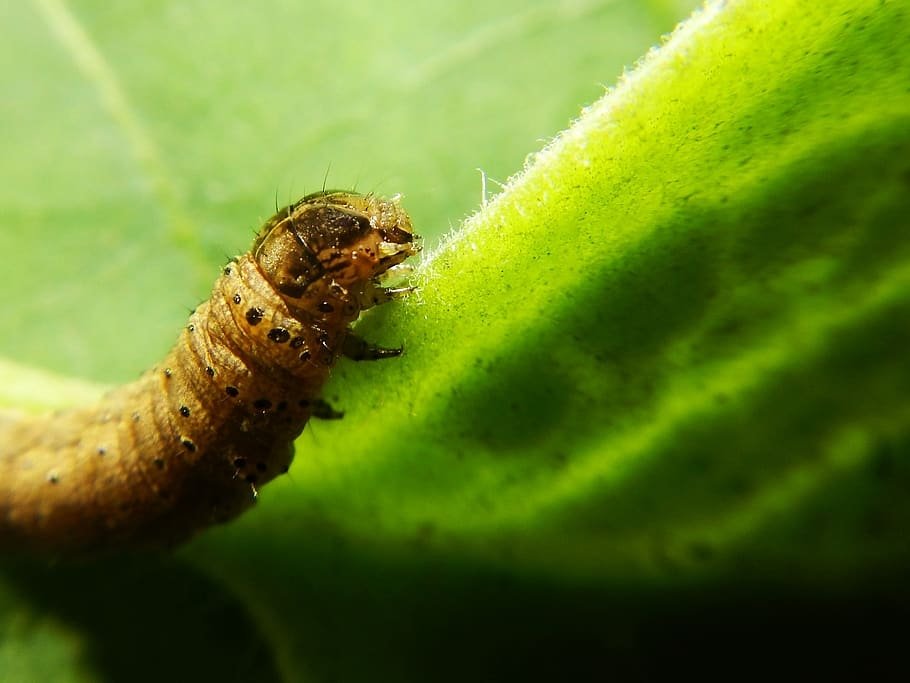Table of Contents Show
Do you have an extensive garden but are tired of tilling earth? Perhaps you’ve been considering switching to a hydroponic system.
However, the switch to a new growing method will still present you with insect issues that threaten your yield. Press on to learn how to control pests in your hydroponic system properly!

The Many Benefits of Hydroponics
Everyone from pizza and pasta lovers to cat moms can all benefit from a hydroponic garden set-up. Did you know that many leafy greens and vegetables grow less efficiently in soil?
Hydroponic gardens supply all the nutrients your plants need without soil. Dirt is simply a middle man which nutrients and water pass through on their way to the roots.
Plants can grow fine without it, explaining how trees can grow in parking lots and grass overtaking a sidewalk.
Some plants don’t grow as well under traditional growing methods, as shocking as this may seem. After many studies and research over the years, scientists have to come to realize the following plants grow better in hydroponic gardens:
Lettuce
- Catnip
- Cabbage
- Blueberries
- Peppers
Pests and Hydroponics
No matter where you grow your plants, they’ll never be out of reach of hungry pests. Backyard gardens, greenhouses, and industrial hydroponics all must combat several species of insects, including:
- Whiteflies
- Spider mites
- Thrips
- Aphids
- Fungus gnats
All of these insects can populate quickly and devastate your crop. Before you know it, a few bugs can turn into a full-fledged invasion. It’s critical not to react to them but to prevent them before you begin planting actively.
Read Also:
Whiteflies
Despite their name, these are more closely related to aphids than flies. Nonetheless, whiteflies are a major problem to gardeners as these feed on plant sap, causing tremendous damage to leaves.
If these pesky critters are the problem, there are a few ways to combat them. You could attract a population of wasps to let nature handle your problem, or you can hang sticky traps above your plants.
While both methods can work, they both may fail to prevent damage to your plants. In these cases, professional whitefly control is the only option left.
Thrips
These feed on the plant juice on the leaves and stems of your plants and vegetables. Common colors of thrips include brown, black, and yellow. Their eggs are milky white and very tiny.
Early prevention before they lay eggs is key. To do so, sticky hanging strips are an excellent defense. However, if you notice it too late, you may need to spray or hire a professional.
Beware, thrips control is no easy task as many homeowners struggle with the seemingly easy task.
Fungus Gnats
An adult gnat poses no threat to your plants or garden. The damage comes when the gnat is in its larval stage. Larvae solely consume the root systems of plants. This can be hard to notice despite the lack of soil if you aren’t looking for them.
These are tricky for homeowners or commercial growers to do on their own. Preventing adults from laying eggs in the only sure-fire way you can handle them on your own.
Do so easily with sticky traps suspended above your plants. If the eggs have hatched, you may need professional assistance if store-bought solutions are ineffective.
Aphids
Gardens will never see an aphid until plants become weak or under stress. Upon arrival, they begin feeding right away on the sap, and then they’ll start secreting honeydew.
This liquid excretion covers the leaves, and the sugary substance attracts ants. Once you have an aphid infestation, if it’s left untreated, you’ll have an ant invasion as well.
Insecticides are the only true way to stop an infestation once it’s begun. The concentrated chemicals will wipe out the invaders while not harming your plants.
Better yet, avoid bringing outside containers and equipment into the grow room. Often that’s how they enter.
Spider Mites
Related to spiders, spiders mites can cause many issues for your plants. These pests attack the stems to extract the juices, which is their favorite food source.
The longer they feed, the weaker your plant will become. Check for fine webbing as it could indicate their presence.
Much like spotting them, combating these pests can prove tricky. Professional pest control companies use a spray with pyrethrin, which paralyzes and prevents mites from eating.
If you prefer a DIY method, avoid using pyrethroids as they may be poisonous to pets and damage aquatic ecosystems.
Is Your Hydroponic Garden Bug-Free?
While it would be impossible to keep any hydroponic garden free of pests, knowing what you’re up against makes the job easier.
Whether you have an indoor or outdoor garden, if it’s under attack, the best thing to do is to call a professional.









